Latvians in Australia
The first significant wave of Latvian migration to Australia was after the 1905 revolution, when Latvians, fleeing from deportation and the Tsarist terror, sought refuge in Australia. In 1913, Latvians in Sydney established their association and library, and later smaller associations regularly held Latvian Independence Day celebrations and Jāņi [Midsummer Solstice].
The largest number of Latvians reached Australia after the Second World War, when about 20,000 Latvian refugees were selected from Germany’s refuge camps, to become “New Australians”. Young, unmarried Latvians with blonde hair and blue eyes suited Australia’s assimilation policy and were selected as some of the first migrants. Arrivals of working age had to undertake two year compulsory work contracts, before they were free to choose their own workplace and place of residence. Most Latvians decided to live in the major centres: in Melbourne, Sydney, Adelaide, Brisbane or Perth. Once they had acclimatized, Latvians established their communities, in which they maintained their ethnic identity through various activities, namely, music, sport, crafts and art. Latvian societies, church congregations, folk dancing groups, choirs, and handicraft groups were founded. Since 1951, the Latvian communities throughout Australia got together at the annual Culture Days. They are held nowadays as well, though less frequently.
From the 2006 National Census data, 20,058 people in Australia considered themselves as Latvian or indicated that they were of Latvian descent. The Latvian communities in the larger Australian cities have been joined by newcomers, who have recently arrived from Latvia.




